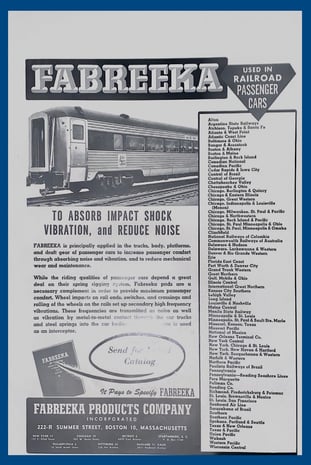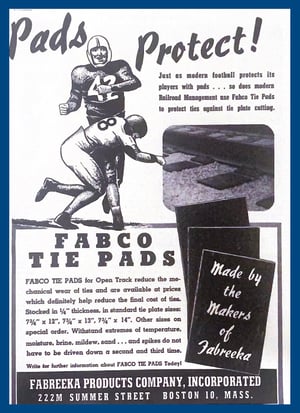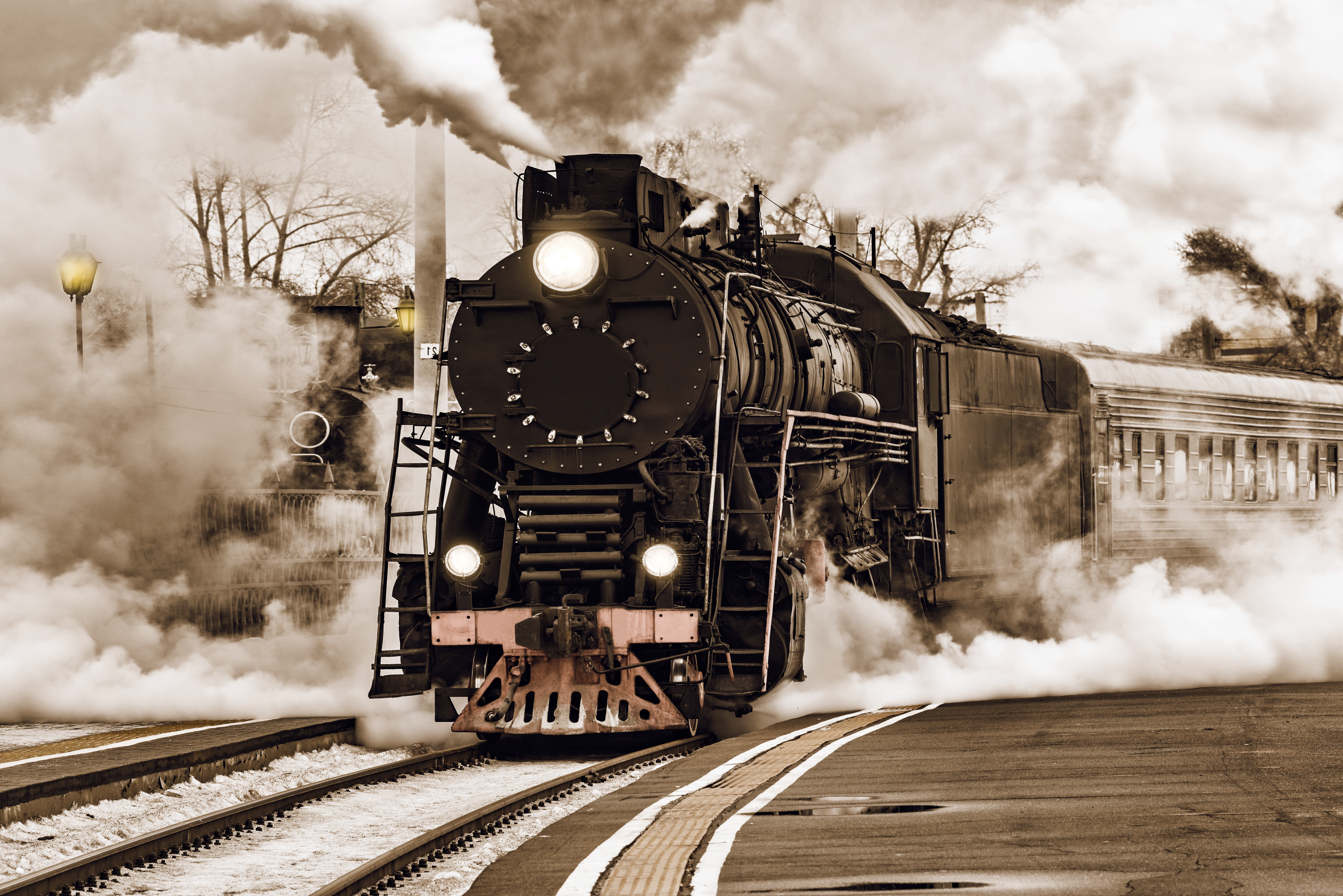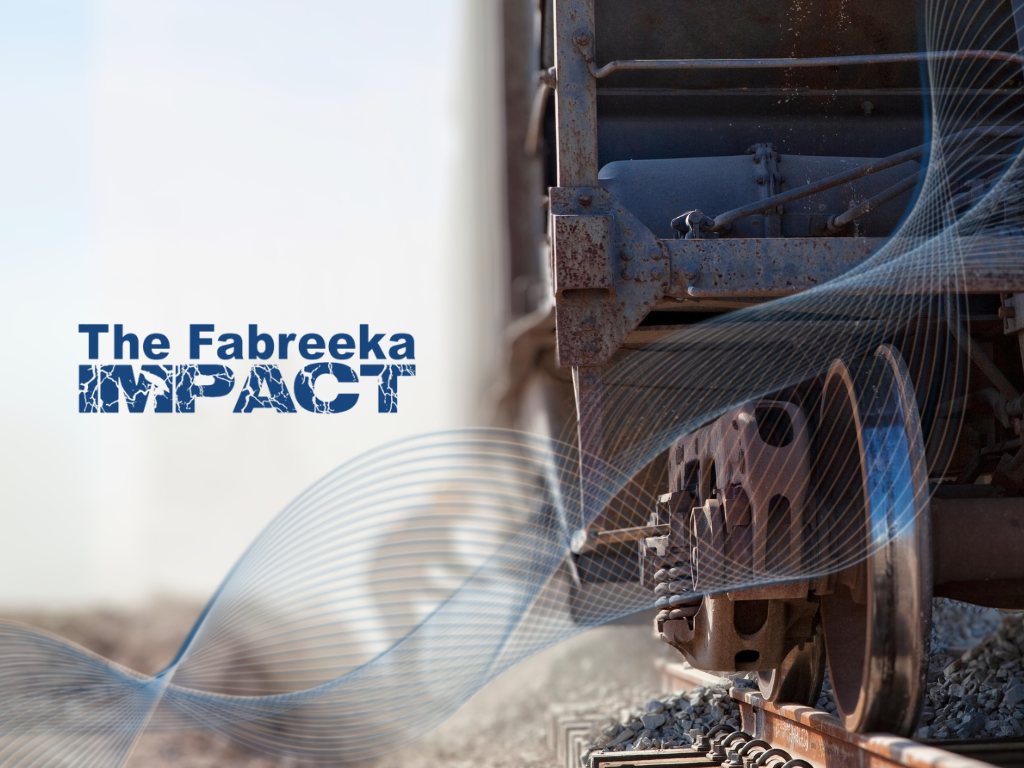During the early 1930s, the idea for Fabreeka pads was conceived when Fabreeka Sales Manager William P. Brennan was asked by a friend of his in the railroad industry whether Fabreeka belting could reduce noise in passenger cars. Due to the noise generated by the steel wheels rolling on the steel rail, isolation was needed so passengers inside of the cars would not be bothered by the noise.
Brennan seized the opportunity to supply a sample of Fabreeka belting to the friend’s railroad company, and its first applications were successful in providing structure-borne isolation to the passenger cars.By 1934, the name of the corporation was changed to “Fabreeka Products Company.” Around the same time, Fabreeka applied for and received a patent to begin its successful career in the use of Fabreeka® pads for reducing shock, vibration, and structure-borne noise.
In an original patent written in 1935 by William Patrick Brennan and Thomas Francis Dwyer Jr., the purpose of the pads for railway devices was said to “...provide a pad which will reduce the tendency to transmit harmonic or resonant vibrations while at the same time possessing just enough resiliency and a maximum flexibility to return to original form after compressive stresses.”
 The shock-absorbing pad consisted of “a plurality of fabric layers cemented together” and was said to not be affected by frost, cold, heat, or oil.
The shock-absorbing pad consisted of “a plurality of fabric layers cemented together” and was said to not be affected by frost, cold, heat, or oil.
In a 1938 patent on the railway products, Brennan and Dwyer wrote about the pads and how they can cushion heavy loads and reduce breakage of components on the railroad car and track.
“When used in railway vehicles… there results a greater reduction and elimination of vibrations and an improved riding quality as well as substantial reduction in the amount of noise and noticeable rumble of the car… Our new pads have also been used with great success in railway track construction interposed beneath the rails and between the ties and plates. Frost and rain seem to have no effect whatsoever upon them and they retain their working condition for long periods without requiring repair or replacement.”
Characteristics about the pads were highlighted for their strength, high damping, stability, compression, resiliency, and long life in a 1946 advertisement about Fabreeka’s line of rail isolation products.
After 12 years of service in the rail industry, the Fabreeka material proved to successfully absorb impact shock, reduce noise and isolate transmitted vibration for both railroad car and track applications.
As the years went on, Fabreeka’s applications continued to expand -- acting as a pad at critical points on railroad bridge structures, railroad crossings, tie plates, journal boxes, center plates, coil springs, and more.
 In the early-1940s, Fabreeka Products Company released their Fabco Tie Pads to protect cross ties from tie-plate cutting and abrasions on the railroad tracks. The material was manufactured from a mixture of cotton duck, rubber, and recycled Fabreeka material.
In the early-1940s, Fabreeka Products Company released their Fabco Tie Pads to protect cross ties from tie-plate cutting and abrasions on the railroad tracks. The material was manufactured from a mixture of cotton duck, rubber, and recycled Fabreeka material.
Then, it was cured in molds under high heat and pressure and cut to the desired thickness and size.
Overall, the cost of the Fabco tie pads proved to be significantly lower than the original Fabreeka material, thus providing a large-scale solution to the problem of mechanical wear to the cross tie and tie plate areas of the track.
Fabco tie pads made an appearance in a 1948 advertisement in “Railway Engineering and Maintenance.”
“Just as modern football protects its players with pads… so does modern Railroad Management use Fabco Tie Pads to protect ties against tie plate cutting,” the advertisement read.
Fabreeka’s Fabco Tie Pads are still being used in track applications today; however, the material is now referred to as our SA-47 bearing pads. In addition, Fabreeka pads are found today in applications ranging from the bases of stacks/towers to mining equipment, forging hammers and more.
After nearly 87 years in the rail industry, top manufacturers, suppliers, and contractors know to trust Fabreeka to deliver quality isolation solutions for their projects.
To learn more about our line of rail isolation products read, “Rail Track Repair: How to Reduce Damage on Railroad Tracks".





SUBMIT YOUR COMMENT